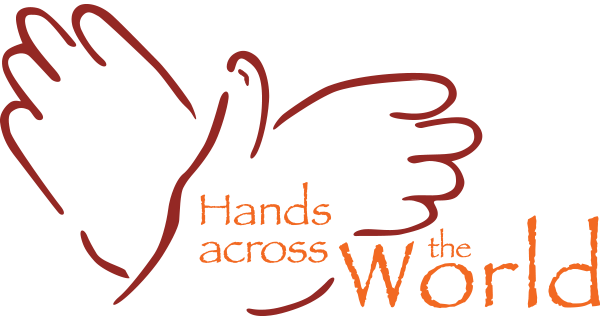email: haw@drpap.com
Why We Do What We Do
[qt:/wp-content/uploads/2011/09/bottle.mov 640 360]
by Rick Silverman, M.D.
Evelyn was one of the cutest babies I’d ever seen. The small split in her upper lip somehow failed to diminish her infantile beauty, though left un-repaired, it would have eventually resulted in social stigma and perhaps a life less productive and less meaningful than it would otherwise be. As such, she was destined to a challenging life of poverty with little chance for upward mobility, a fate she shared with many who populated her small town south of Quito, the Ecuadorian capital. The visible cleft in her lip, as well as the less obvious cleft in her palate would shape her early life more than just about anything else this small baby would experience prior to reaching puberty.
So often I’ve been asked why there are so many of these children with cleft lip and palate in Ecuador, and there are reasons why so many of these children flock to surgical missions like ours. But the main reasons are because they are poor, because they have some genetic predisposition, at least in most cases here, and because without groups like ours to do the surgery, many of these children would spend their lives hidden in the shadows of society. And the next question is frequently directed at the role Ecuadorian plastic surgeons play in the lives of these children, if any. Indeed, over the years we have gotten to know many very generous Ecuadorian surgeons, who donate their time and even costly supplies to provide for the underserved among their fellow citizens. But even if they don’t charge for the surgery on a routine basis, the patients could hardly afford to buy the ingredients to the surgery—the sutures, the blades, the intravenous fluids and antibiotics, the pain medication—all of the necessities of an operative procedure. These supplies could cost one or two years worth of hard-gained earnings, an impossibility in this often subsistence-level society.
Local plastic surgeons do what they can, but this may also an involve an invitation, like the one to which we first responded about eighteen years ago, to come with a small team, to bring supplies, surgeons, nursing staff, and to share in the opportunity to care for the children of Ecuador. We answered the invitation with a resounding yes, and now for eighteen years, we have been coming to be with our dear friends—our family in Ecuador—and care for our children. These are our patients, who come to us year after year after year, like Evelyn. I saw her, a couple of months old, and I thought I would enjoy watching her grow up. And I have. I remember her second visit with us, when we repaired her palate. Her face was changing, she was no longer a baby, more a toddler, and she was still just about small enough to control. But not the following year. I remember hearing her cry while being examined. That wasn’t unusual, of course, because so many of our patients are small children, and they don’t understand the purpose and meaning of our actions. They only know they are being poked and prodded, and Evelyn had had just about enough. The adorable baby in the white bunny suit, donated by some caring soul in central Massachusetts, was no more. Evelyn was a little girl, and she was having none of it!
That visit yielded a smaller surgery to repair a residual hole in her palate called a fistula, that occurs all too commonly after these operations, and can contribute to speech problems as well as food and liquid coming out of the nose. In fact, with smaller defects, where speech is unimpaired, we will often not treat the fistula, since it is frequently very far forward in the mouth, and would normally be repaired when the patient is ready to have some bone put into the cleft to allow dentition to develop properly. The normal course of events includes orthodontic treatment prior to bone grafting, and since so many of these children will never have the orthodontics, we put the bone in and repair that last little open area only rarely on our trips. In Evelyn’s case, it’s unlikely that she’ll ever get braces, so she’ll never have the bone grafting done either. In fact, her fistula repair when she was two was the last surgery she had until this year.
At nine, Evelyn is a bright little girl. She has the facial appearance typical of many of these children, with some flattening of her midface, some thickening and shortening of her upper lip, as well as the scar that is readily apparent. She doesn’t have a problem with a fistula anymore, but she continues to have difficulty speaking, with lots of air coming out of her nose during speech, described by the term “velopharyngeal insufficiency” or VPI. Her palate was repaired originally in a way that usually produces a long palate, in order to prevent VPI, but in her case, the palate is short and doesn’t move very well. Based on her examination, she is scheduled for a procedure called a posterior pharyngeal flap. This operation raises two opposing flaps in the back of the throat and sews them together to create a blockage in the back of the pharynx to prevent the air from going out through the nose. If this sounds like it would hurt, it should—and it does. There’s a raw area on the throat afterwards, which results in the worst sore throat you could imagine.
The surgery is uneventful. In the recovery room after the surgery, Evelyn makes little noise. She’s old enough to realize that crying will just make things hurt more, and like so many of these children, she is very stoic. Although we try to explain to the patients and their families what we are doing in a procedure like this, it’s not very likely that they understand fully, but she knows that her throat is very sore. In the meantime, I pulled up her photos from her original lip repair to share them with newer members of the group, many of whom are on their first mission. Someone asks me if I can print the photos for Evelyn and her mother, and I go about doing that as the nurses prepare to transfer Evelyn to the ward to recover further. As her stretcher is wheeled past the desk where the computer and printer sit, I take the freshly printed copy of this adorable baby—with and without her cleft lip—and hand it to the young girl, who has been lying so quietly, afraid to make a noise lest it worsen her pain. At first, I think she is going to smile when she sees the photos, but her smile turns into tears, as she hands the photo to her mother, now also crying. Are these tears of regret for this child who might have been born perfect, avoiding the struggles she’s had to look and sound like her friends? Are they tears of thanks that somehow they’ve been provided with the care to repair the defects with which she arrived in this world? My Spanish isn’t good enough and the moment isn’t right to try and determine that. And it’s all I can do to try and reassure both of them without breaking into tears myself.

